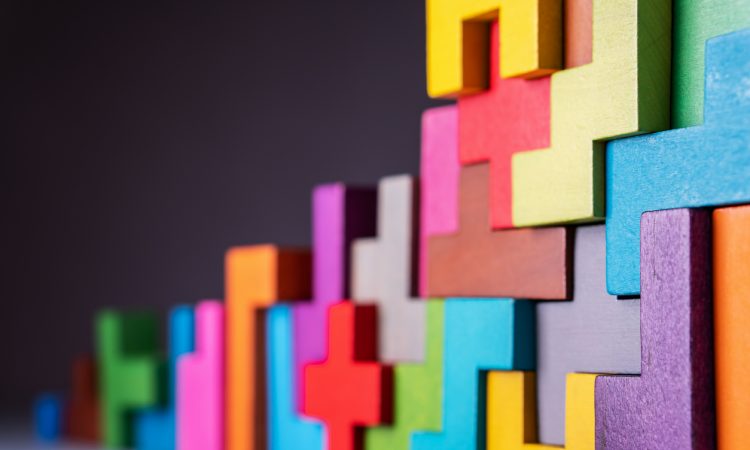|
Getting your Trinity Audio player ready...
|
In everyday life, we frequently hear the word systems. Systems are all around us. We rely on computer systems, transport systems and health systems. We may work in education systems and organizational systems. Most of us are members of family systems. Based on our experience with systems of all kinds, we know that they comprise many interconnected parts and are dynamic and subject to unanticipated change.
Individuals are systems made up of many parts or sub-systems that all have a role to play in keeping us healthy. For example, we all have skeletal systems, nervous systems, cardiovascular systems and muscular systems. In addition, we have personal traits such as personality, interests, values, age, gender, abilities and talents. Together, these traits and sub-systems make up the individual system, which is core to the Systems Theory Framework of career development (STF; Patton & McMahon, 2021). That is the focus of this blog, along with its applications.

Even though the personal traits of clients have been an important, ongoing focus of career development theory, practice and research, we know that individuals do not live in isolation. For example, we know that other people in our lives such as family members, peers and colleagues may offer opinions and advice on our career decisions, may be affected by our decisions or may limit the decisions we make. From the STF perspective, these people comprise our social system of influence.
Also affecting our career decisions are influences from the wider society in which we live. For example, our socioeconomic circumstances, where we live and the employment market may open up or close down opportunities for us; these conditions can privilege, oppress or discriminate against us. In addition, global issues such as sustainability and advances in technology such as AI are affecting the careers of individuals. From the STF perspective, influences such as these comprise the environmental-societal system of influences.
As individuals, we are temporally, contextually and culturally interconnected with these systems and interact with them. The Systems Theory Framework of career development refers to this interactive process as recursiveness. What we know about ourselves as individuals, our social systems and the environmental-societal system in which we live is that things change over time and are sometimes subject to chance events, which can profoundly impact careers. In a nutshell, the STF comprises the individual system, the social system and the environmental-societal system which recursively interact, change over time and are sometimes subject to chance events. All of this influences career development. The STF is a dynamic systems map. Career development is complex and the STF map makes its complexity visible.
Given the complexity of career development reflected by the STF, it can be difficult to imagine how it can be applied in practice. However, a systems perspective on client concerns helps us avoid a narrow focus and enables us to consider cultural and contextual influences. So, how do we do this?
To begin, we need to use systems thinking. Systems thinking in career practice can be fuelled by curiosity to find out more from clients. Systems thinking is about identifying influences on client concerns and, more importantly, finding out about the nature of the influence on the client’s concerns. Systems thinking can be learned. We can begin to learn systems thinking just by observing what’s around us and thinking about how everything is connected. We can reflect on what would happen if a part was removed or broken, and whether the removal or breakage of one part would matter more than if it happened to another part. We can remember conversations in our family about what people have said to us about our abilities or future plans, and what effect that had on us.
Systems thinking is fundamental to systems mapping. If you have ever used a genogram, a timeline, a lifespace map or a mind map with a client, then you have already used systems mapping. Maps provide rich clues that can be elaborated on by clients in the stories they tell. There are many ways to draw systems maps with clients in career practice. The details in the maps become clues for practitioners to find out more and to encourage clients to expand on the influences themselves and the impact of the influences on their career concern. Collages are also useful visual ways of involving clients and find out about their career influences. Systems maps and collages can encourage clients to tell stories.
“Systems thinking is about identifying influences on client concerns and, more importantly, finding out about the nature of the influence on the client’s concerns.”
Storytelling is fundamental to all forms of narrative career counselling. The story telling (two words) approach to narrative career counselling is based on the STF. It is a non-directive approach where practitioners enter a client’s life space with respect and empathy and with genuine curiosity to find out more about them and their career concern. Career practitioners need to assume a facilitator role rather than an expert role, which means listening more and talking less. As clients speak, they offer clues for further inquiry. Reflection, connectedness, meaning making, learning and agency are the core constructs that guide the story telling approach. In essence, career counselling becomes a reflective space, in which clients tell career stories, connections are made within and between stories and themes identified, which facilitate meaning making and learning. Clients actively participate in the process. Themes can provide clues to future chapter of a client’s stories.
Even though the Systems Theory Framework might look complicated, it’s not really if we use systems thinking to reflect on ourselves and our careers and the systems they have been influenced by. You and your clients can find systems mapping – in whatever form – and storytelling a fun and beneficial way of interacting in practice.







